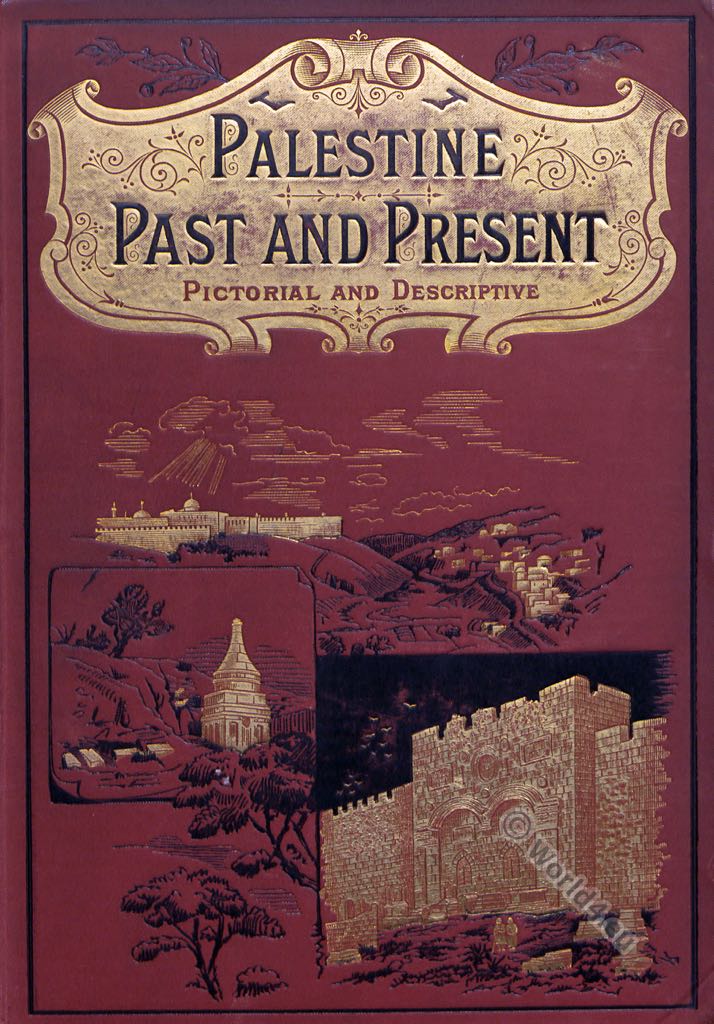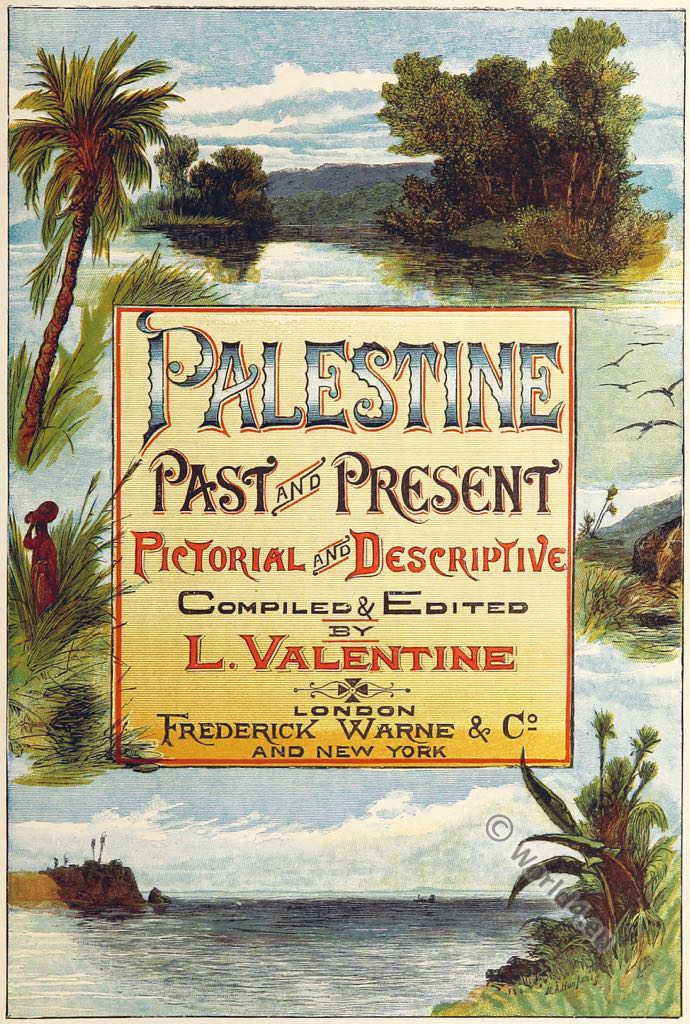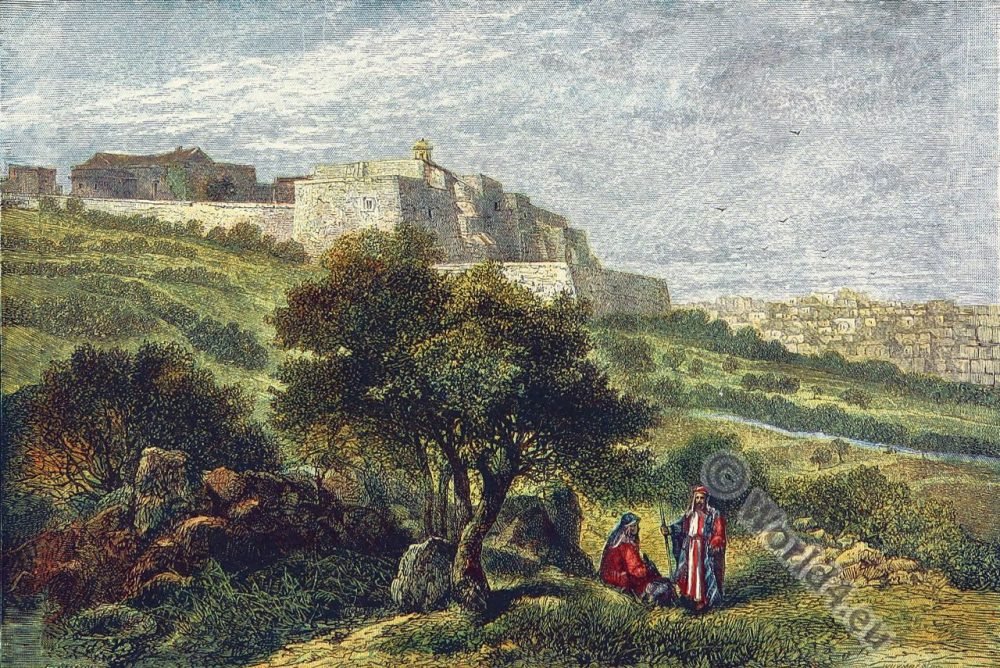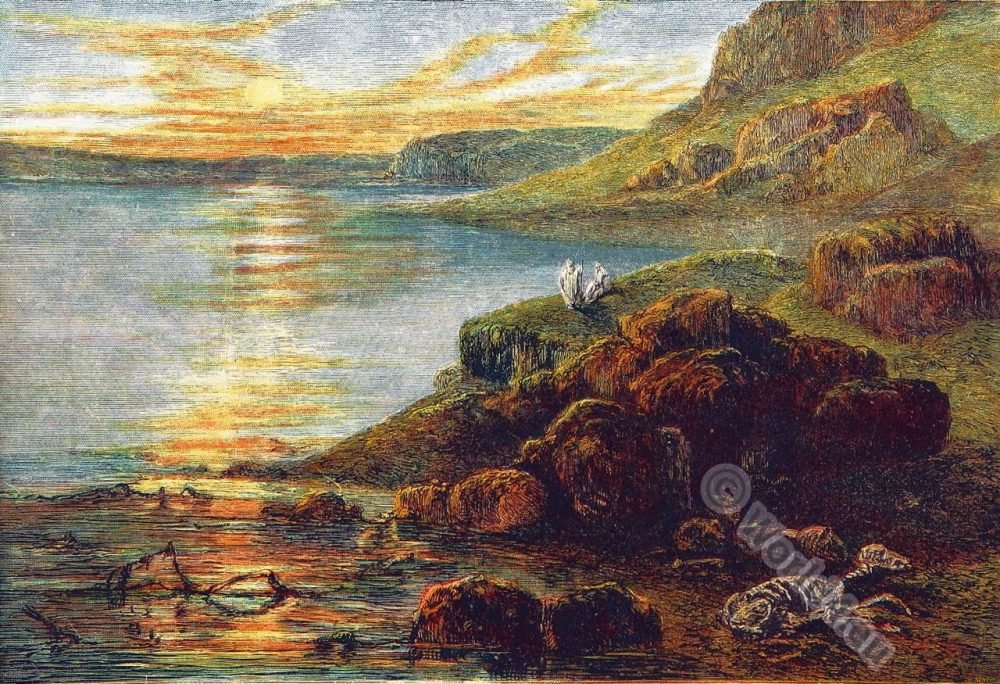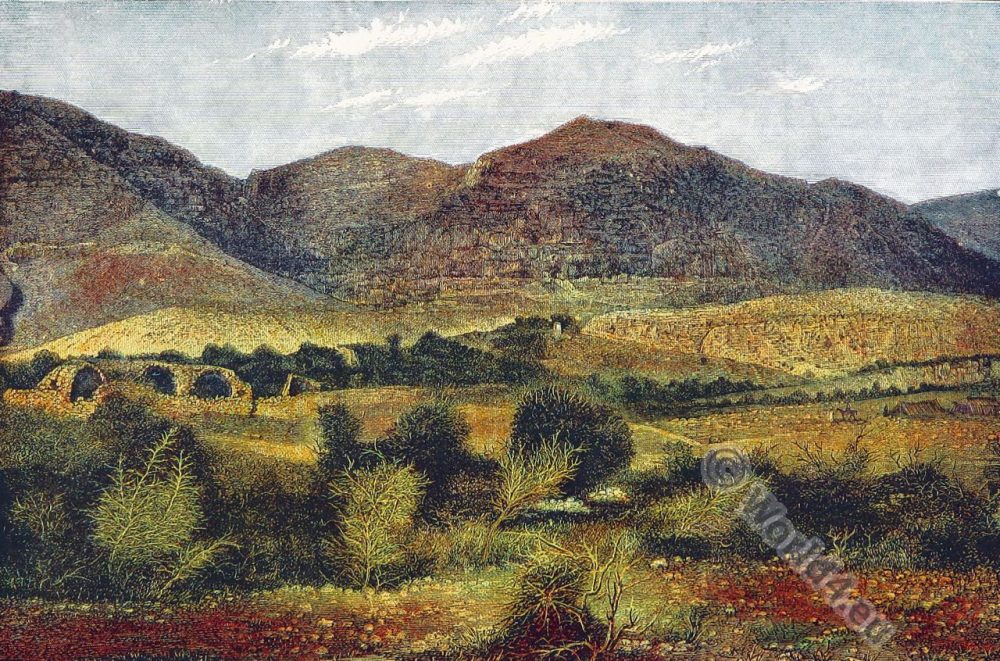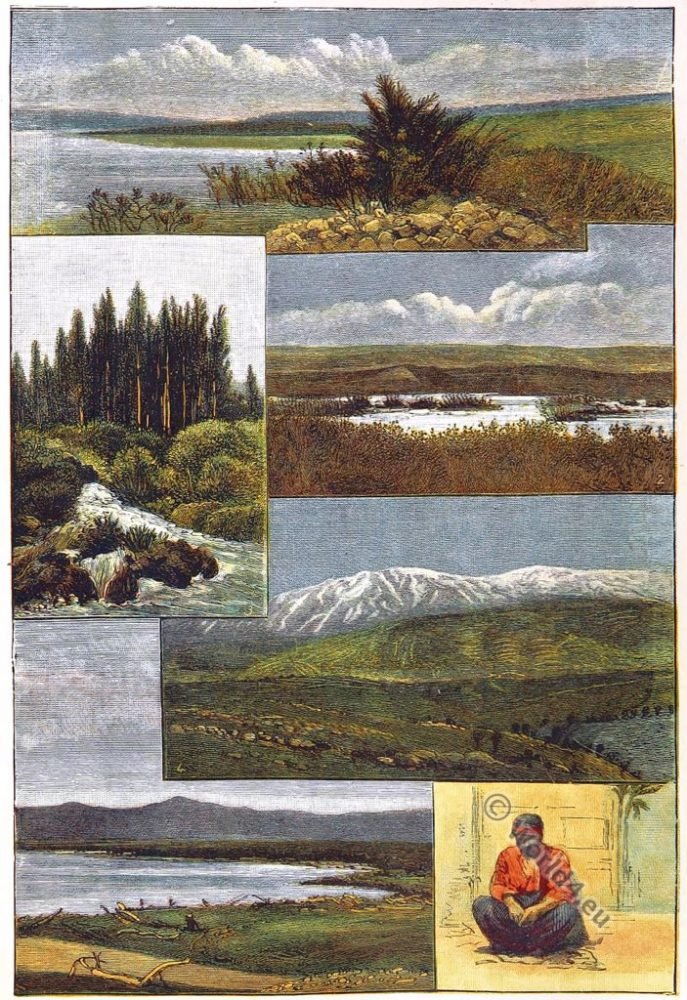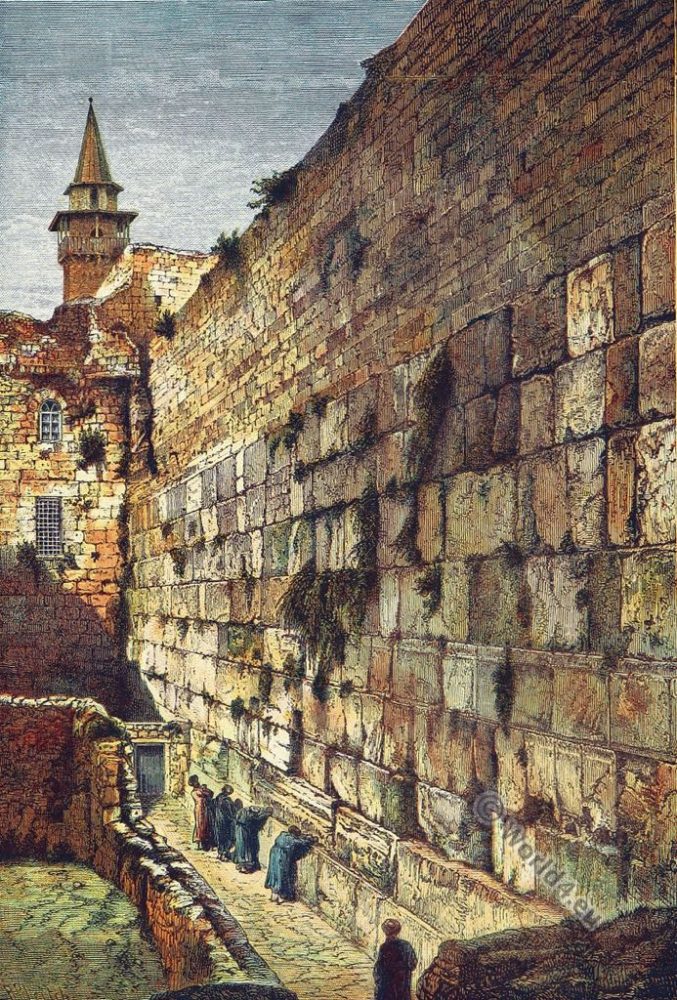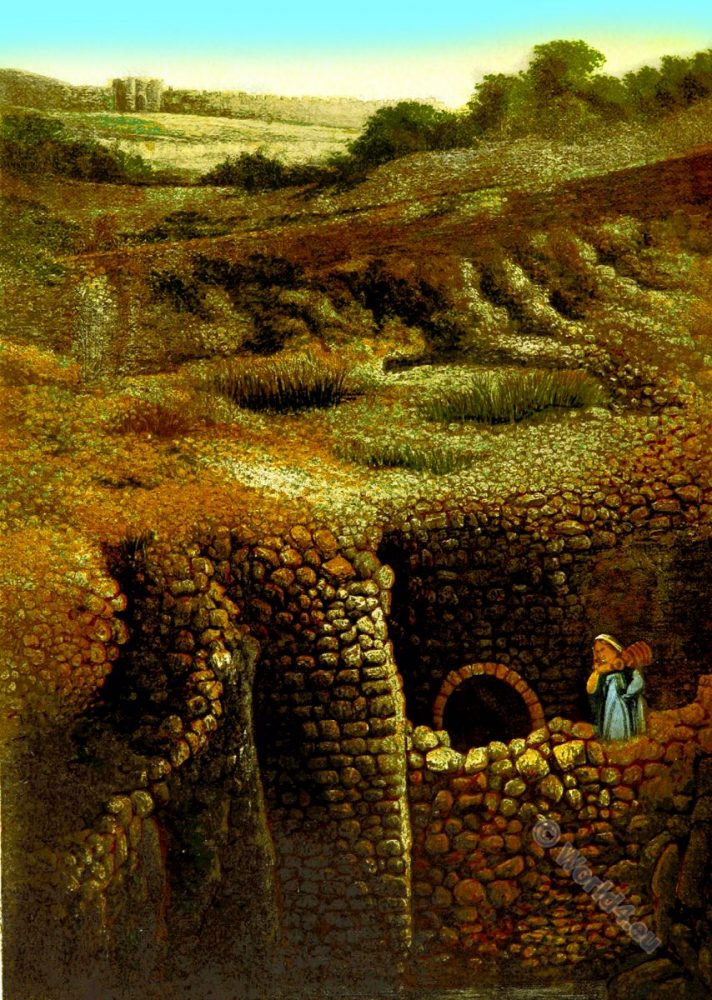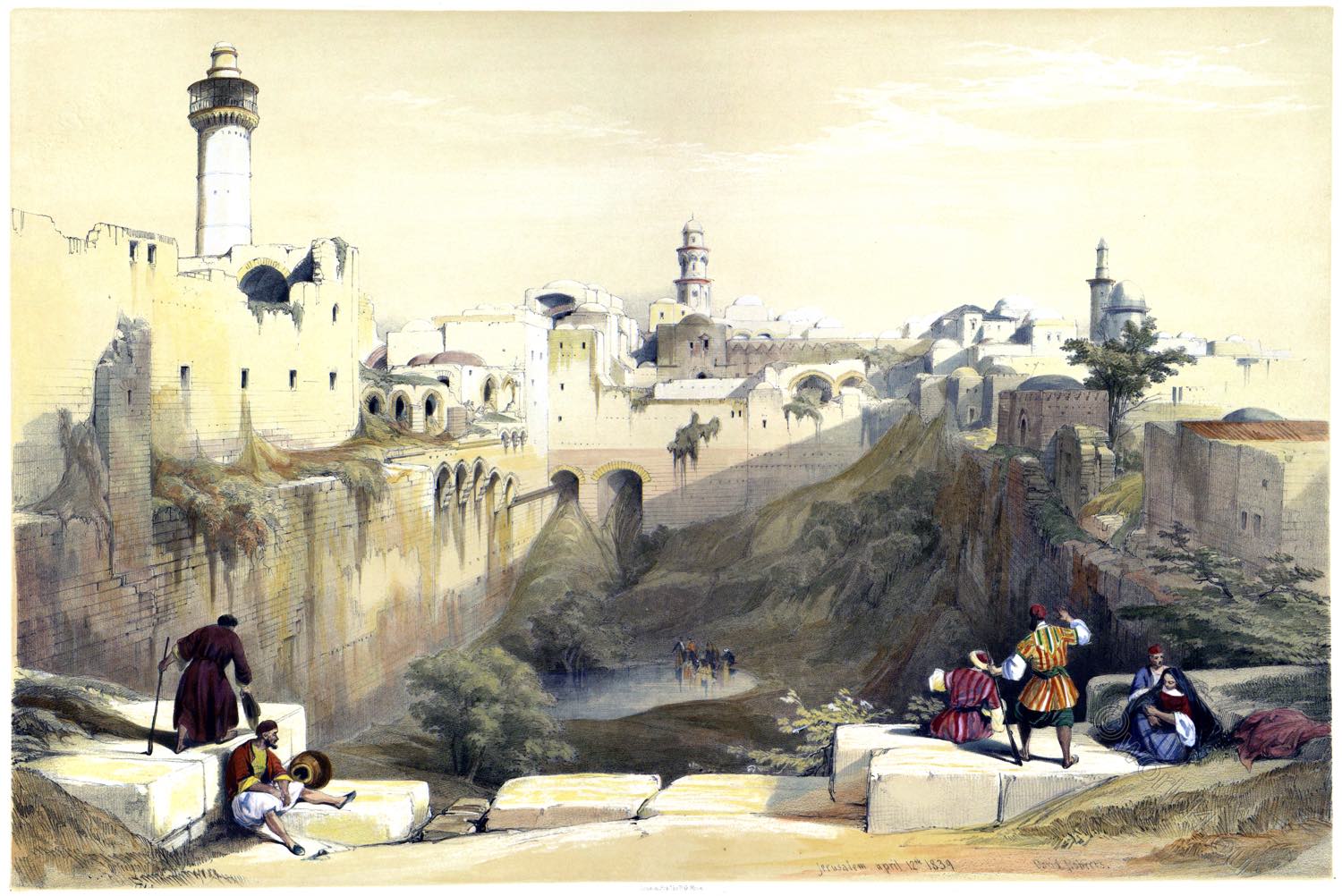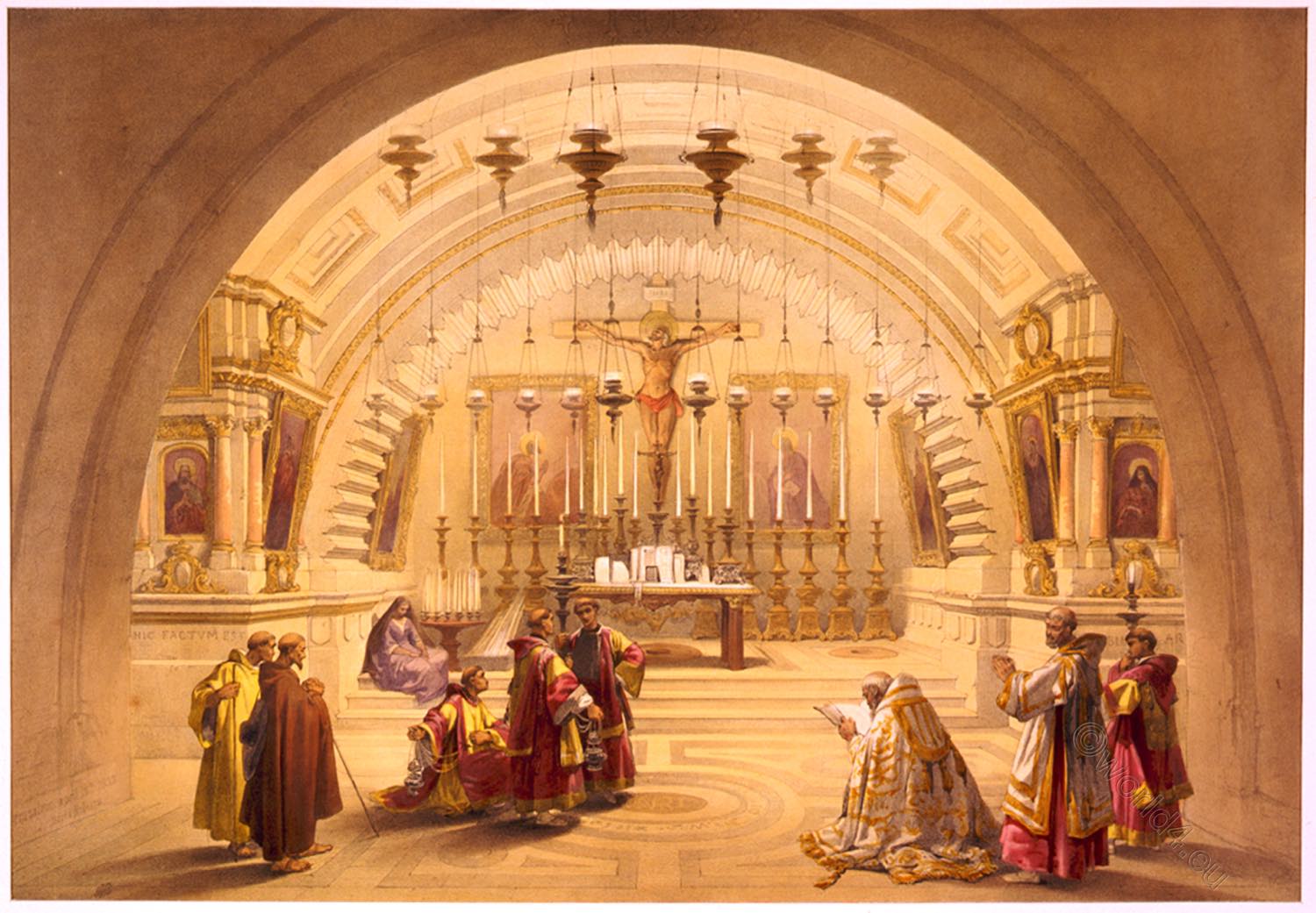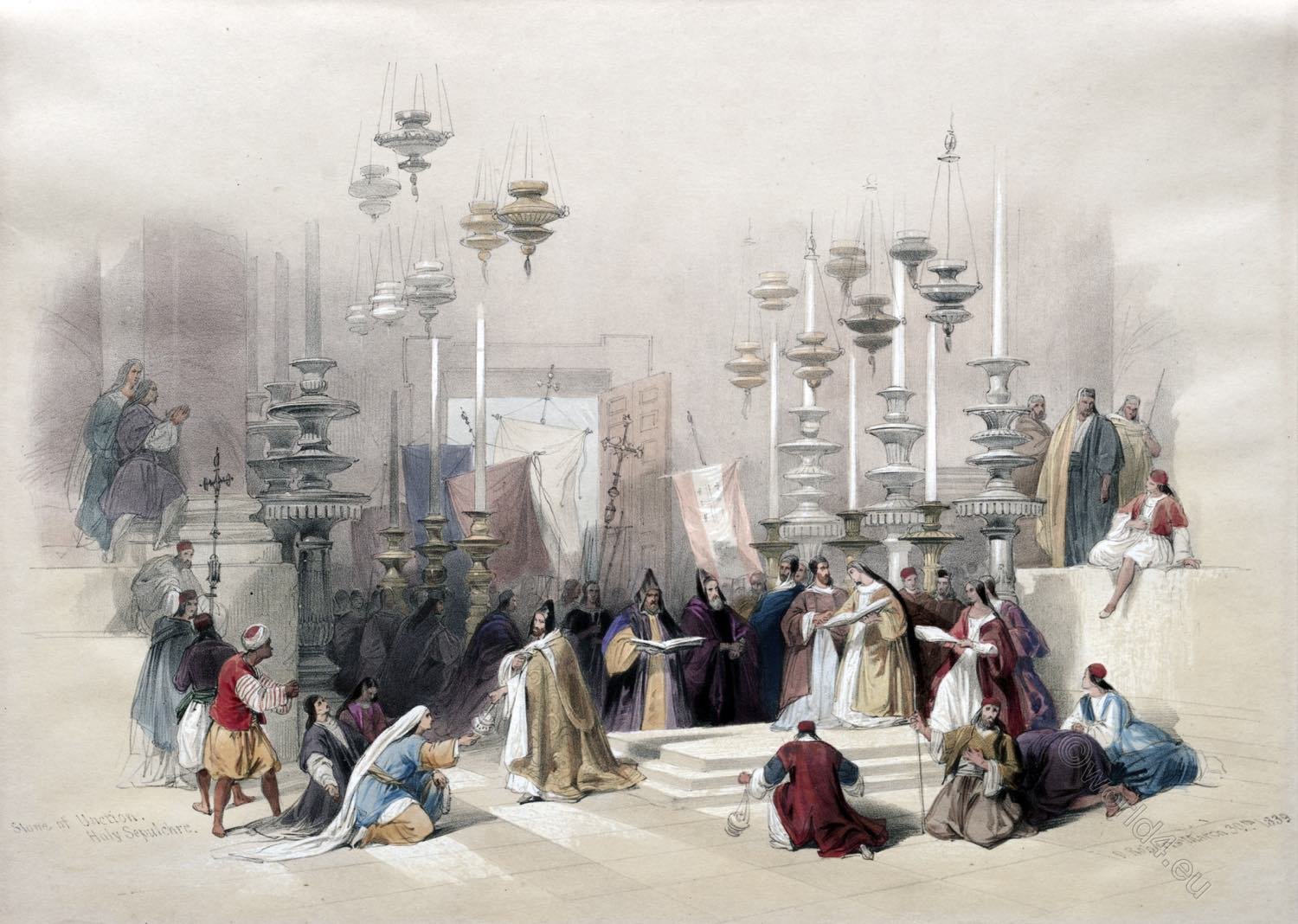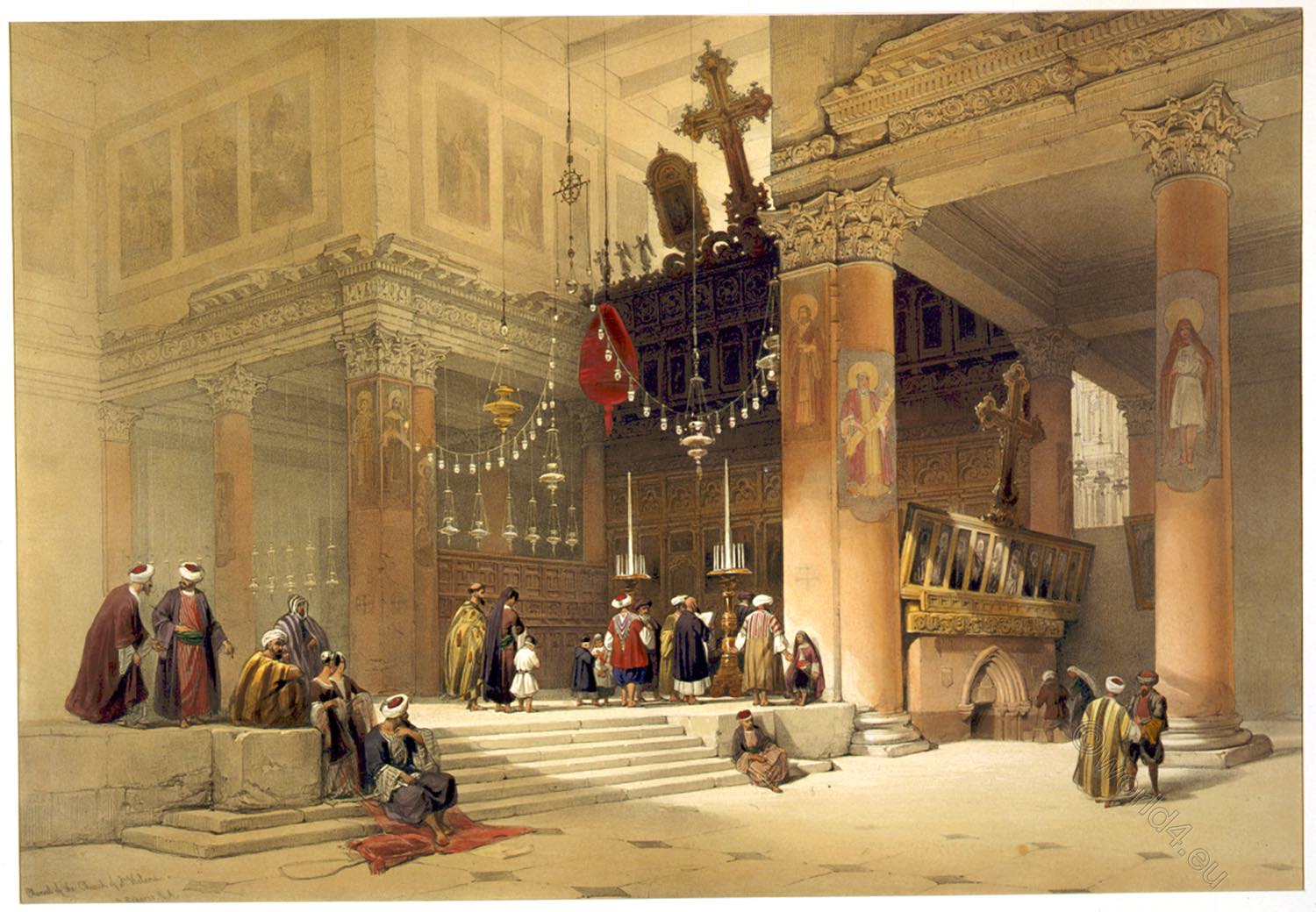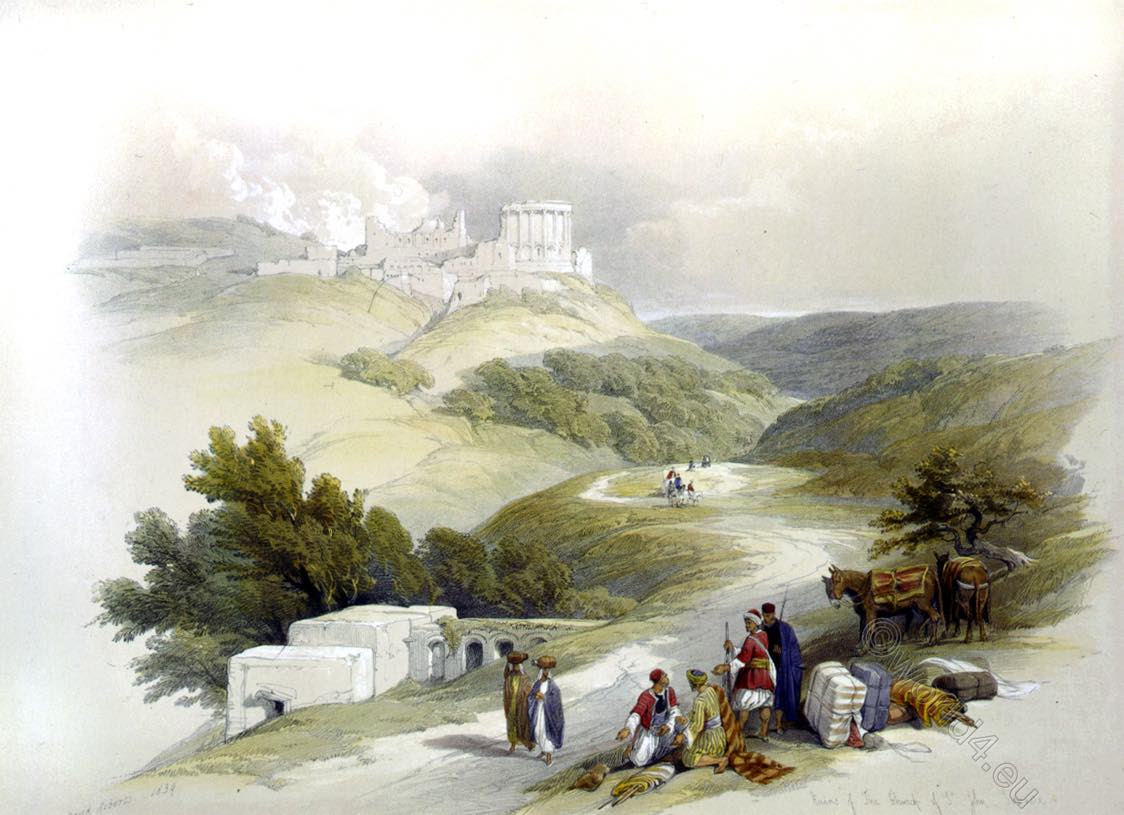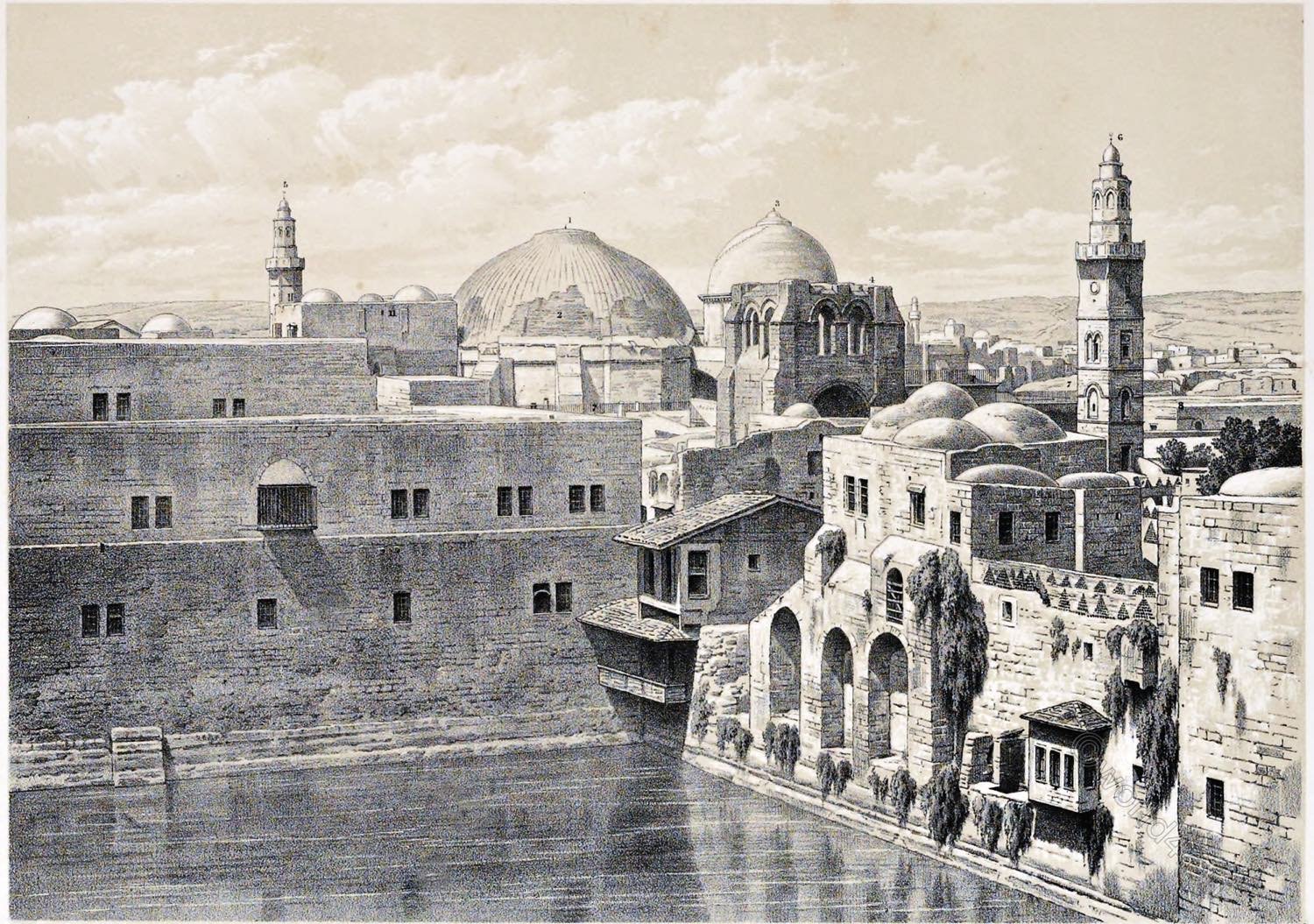
VIEW OF THE POOL AMYGDALON (Hezekiah), AND OF THE DOMES OF THE CHURCH OF THE RESURRECTION.
by Ermete Pierotti
PLATE XXXI.
- Dome of the Church of the Resurrection.
- Places from which the lead has been stripped, of the side of the Greek property.
- Dome of the Greek Chapel.
- Tower of the Church of the Resurrection.
- Minaret of the Hospice of Saladin.
- Minaret of Omar.
- Terrace-roof of the Greek Convent of S. Constantine.
- Greek Convent, by whose members the Church of Gethsemane is served.
- Hospice of the Copts.
- Pool Amygdalon (Hezekiah).
- Hospice of Saladin.
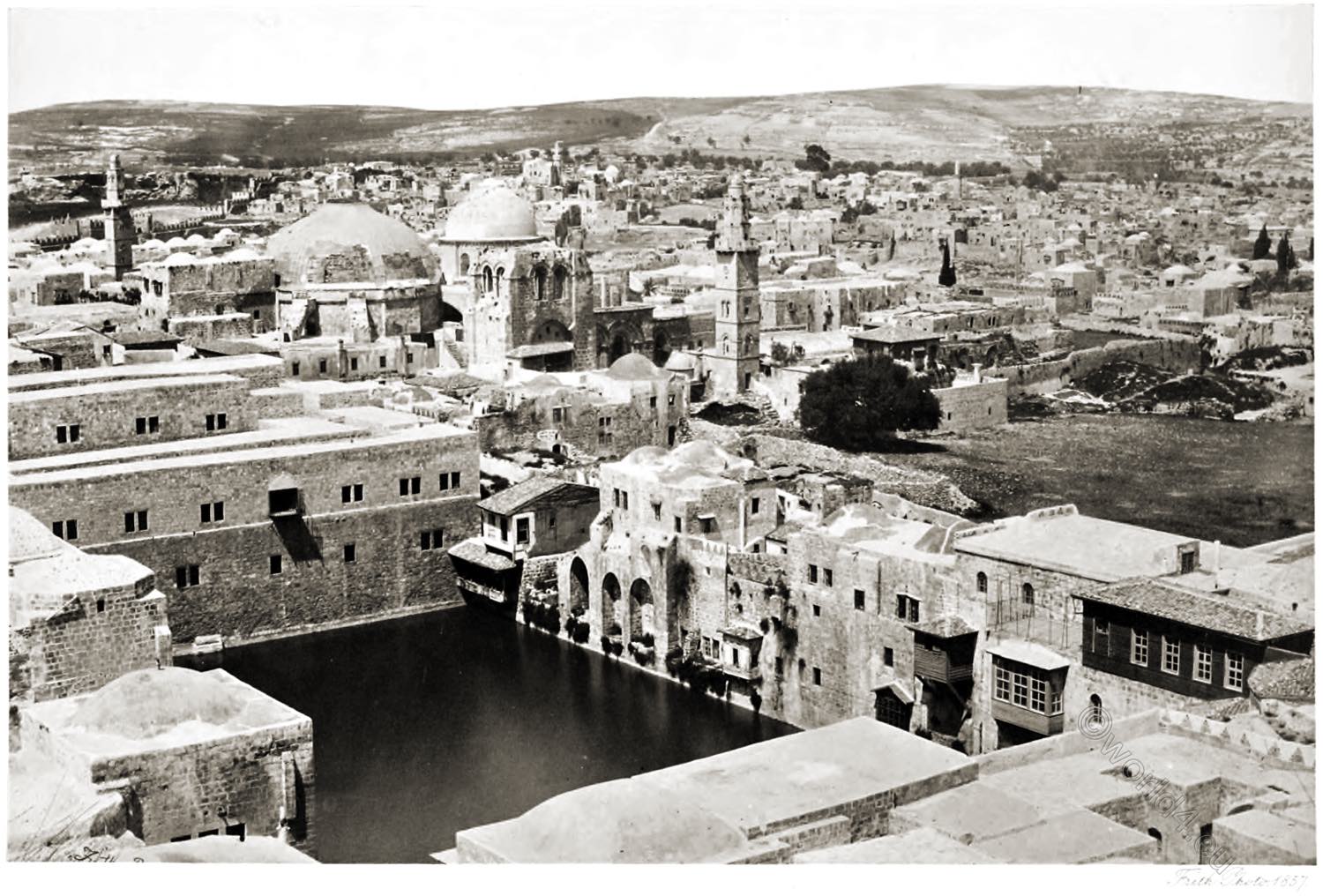
The Pool of Hezekiah, and the Church of the Holy Sepulchre.
From the tower of Hippicus, Jerusalem.
by Francis Frith 1857
I DO not envy the man who can enter unmoved the land –
“Where the holiest of memories, phantom-like, throng.”
If he has no organ of veneration, he had better stop at home and read “Eothen.” I cannot write lightly of Holy Palestine. It is true that the natural features of the country are, for the most part monotonous and comparatively uninteresting,—that the towns are paltry and dirty in the extreme—… *) that the population is ignorant and bigoted,- in spite of all this, and overwhelming it all triumphantly, comes the thrilling recollection—that this was the country of Abraham and the Prophets!— these the cities of David! and—first and last, and mingling with every line of its eventful history—that this was the spot of His earth chosen by its Creator from the beginning, upon which the plan of His salvation should be finished.
*) This paragraph has been shortened because the author, unfounded from today’s perspective, makes very condescending remarks about the indigenous Arab population. Whereby his view has nothing to do with the location of the topic.
It was in Palestine that he was made flesh and dwelt among men. And it was especially in Jerusalem and its neighborhood that He fulfilled his ministry, manifested his Divine nature, and finally, in one awful hour, “in his own body on the tree,” sustained the accumulated sins, and suffered the concentrated agony of the whole human race.
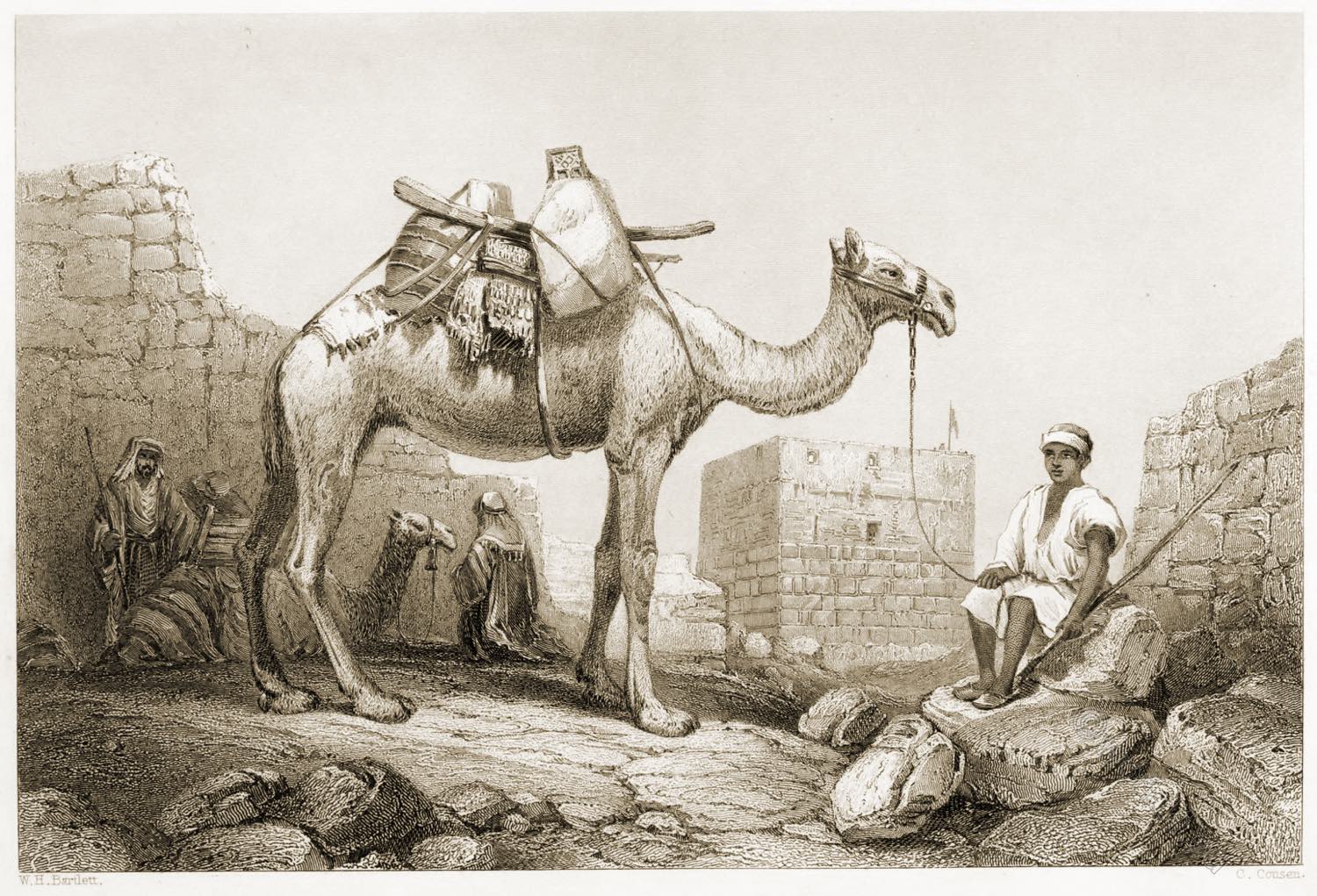
No wonder that men have striven to perpetuate the local memories of even the most trivial events of this glorious and awful period. And yet, in spite of man’s most earnest endeavors, most of these localities are irretrievably lost: even the site of the holy Sepulchre is doubtful. May we not recognize in this uncertainty—to which we find a parallel in the concealment of the burial-place of Moses— the hand of Providence defeating the tendency of mankind to place-worship, and its attendant ceremonials?
I shall have more to say respecting the general features of modern Jerusalem, in connection with some other of my views: I confine myself, at present, to a short notice of the more prominent objects in the picture before us, viz., the Pool of Hezekiah, and the Church of the Holy Sepulchre. We read (2 Kings xx.20), that “Hezekiah made a pool and a conduit, and brought water into the city;” and also (2 Chron. xxxii. 30), that he “stopped the upper water-course of Gihon, and brought it straight down to the west side of the city of David.” Upon this Dr. Robinson observes:- “From this language we can only infer, that Hezekiah constructed a pool within the city on its western part. To such a pool the present reservoir, which is doubtless an ancient work, entirely corresponds; and it is also fed in a similar manner.” The buildings with railings extending over the Pool are “The Mediterranean,” and other hotels, and will probably be familiar to many of my readers. The Pool still continues to supply the city with water. It is 240 feet long, by 144 feet broad.
The dilapidated domes of the Church of the Holy Sepulchre proclaim its present condition is a good specimen of Byzantine architecture. It is in the joint possession of the Greek and Latin churches, and the ceremonies performed in it at Easter have been described by a host of travelers. It was formerly and more appropriately, called the Church of the Resurrection. It has been twice, at least, totally destroyed once in the 7th, and again in the 11th century,—and as late as 1808, the greater part of the church and the whole of the cupola were destroyed by fire. The identity of the site, as before remarked, is very questionable:
we are told that the Sepulchre was “in a garden nigh at hand” where Jesus was crucified took place without the walls. Dr. Robinson satisfied himself, by a survey from the very spot on which this view was taken, that the present site could never have been excluded by the second wall *) see his “ Researches,” vol. i. p. 410).

Oriental and Sacred Scences.
Palestine Past and Present. By L. Valentin. 1893.
THE only spring of Jerusalem is the Fountain of the “Virgin,” which rises in a deep cave at the foot of Ophel, valley of the Kedron, under the Temple walls. The Moslems call it the “Mother of Steps,” on account of the two flights of steps that lead down to it. The masonry lining the sides of the cave is very ancient.
This spring is the En Rogel of the Old Testament; but Major Conder believes it to be the Pool of Bethesda, mentioned by St. John as the scene of the healing of the Cripple, for the water has an intermittent flow. This peculiarity gave rise to the legend that a dragon lies at the bottom of the fountain. When he is awake he stops the water; when he sleeps, it flows.
St. John tells us “that an angel of the Lord went down at certain seasons and troubled the water“; whoever then stepped in first was healed of any infirmity. It had five porches, in which the sick and suffering lay to await the rising of the waters.
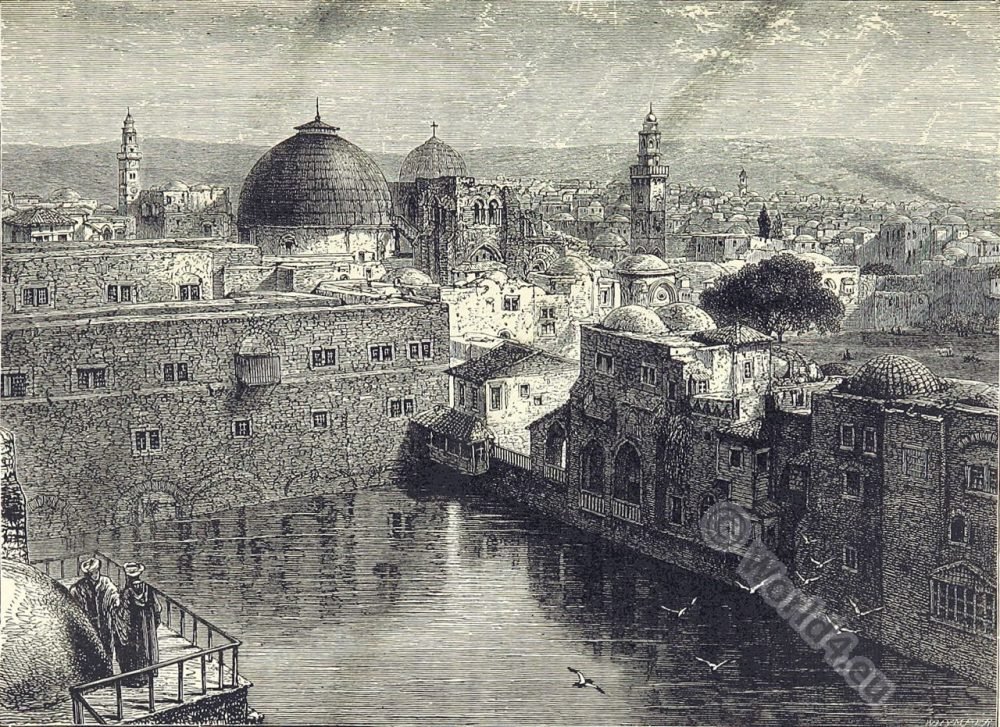
From the back of the cave or rock chamber of the Virgin’s Fountain a very narrow passage runs south, under the Ophel hill, for about the third of a mile, to the Pool of Siloam. It is a channel for the fountain, but owing to the intermittent flow of the water it is at times clear; at others, however, when the water rises, it rushes down the channel and fills it, in some places, up to the roof.
As the flow takes place at uncertain intervals, and cannot be reckoned on, the exploration of the tunnel is very dangerous; nevertheless, it has been explored by Dr. Robinson, Sir Charles Wilson, Sir Charles Warren, Major Conder, and others.
Dr. Robinson *) was in some peril in it, and has given us an interesting account of his adventure. He and his fellow traveller, Dr. Eli Smith, put on aquatic costumes, took candles and matches, and entered the channel.
At first they could walk erect, but in a short time the passage became lower, and they had to crawl on their hands and knees. At last even kneeling became impossible, and they could only proceed by lying at full length and dragging themselves along by their elbows. Whilst they were thus circumstanced they heard suddenly the murmur of approaching water.
It must have been a moment of intense anxiety, but happily, as the water came on, it did not reach the roof of the rock by a few inches; they had, however, the greatest difficulty in finding breathing room, and had little hope of escaping death by drowning or suffocation, when they perceived the water gradually sinking. At last it fell entirely, and they continued their laborious progress. Very thankfully, we may be sure, they saw the light at the end of the winding passage, and issued from the tunnel through an arched opening on the pool of Siloam.
At this very spot, in 1880, a Jewish boy found an inscription on the rock, and aware of the anxiety of the Palestine explorers to find inscriptions, he at once informed them of it. Several copies of it were made, but the first accurate one published in Europe was sent home by Major Conder.
The inscription has no date, but the form of the “beautifully-chiselled letters” made it plain to the explorers that it must have been written in the reign of Hezekiah, a little less than 700 years before Christ.
It recorded the making of the tunnel, which was begun at both ends. “The workmen,” Major Conder tells us, “heard the sound of the picks of the other party in the bowels of the hill, and called to their fellows. Thus guided, they advanced and broke through,the two tunnels proving to be only a few feet out of line.” To see if they could discover any more inscriptions, and to find, if possible, the spot where the workmen met, Major Conder and his companions, Lieutenant Mantell and Mr. G. Armstrong, explored the tunnel, dragging with them a chain, and taking compass angles, “which were entered in a wet note-book by the light of a candle, often put out by the water.”
They suffered “from bites of leeches and want of air,” and risked the danger of the rise of the water, from which this time they escaped The dangerous exploration was achieved a second time, but at considerable risk. We advise our readers to look at the account of it given by Major Conder, in his book entitled “Palestine.” As ordinary people cannot penetrate this singular passage, it is usual to walk from the Virgin’s Fountain to the Pool of Siloam. The road is down the Kedron Valley to cornfields dotted with trees, where the Tyropæan Valley joins the Kedron.
These fields are the site of the King’s Gardens, of which Nehemiah speaks. Across the Tyropæan, on an old embankment, stands (or stood) an ancient mulberry tree, fast falling to decay,a few years ago. It is said to mark the spot where the prophet Isaiah was sawn asunder by order of Manasseh, and was called Isaiah’s Tree. Turning to the right and passing a cliff, the traveller ascends the bank and stands by the Pool of Siloam. It is a large reservoir built in with rough but not very ancient stones. At the back of the picture of it is the arch which is at the entrance of the tunnel already described.
It was here that the blind man, obeying “our Lord’s command, washed his eyes, and came seeing.” The words, “Go, wash in the pool of Siloam,” have immortalised its waters. Of the identity of its site there is no doubt, Josephus has so accurately described it, and Jerome speaks of the intermittent flow of its waters.
Directly facing the Pool of Siloam is Aceldama— the field of blood— purchased by the priests with the price of blood, that the traitor Judas had cast at their feet. Here is a great square building, half excavated from the rock, half built of massive stones. It is twenty feet deep, and is a vast charnel house, the floor of which is covered with mouldering bones. This has been identified as the site of the Aceldama ever since the fourth century, and the clay of the soil confirms the belief that it was indeed the potters’ field “used to bur strangers in.”
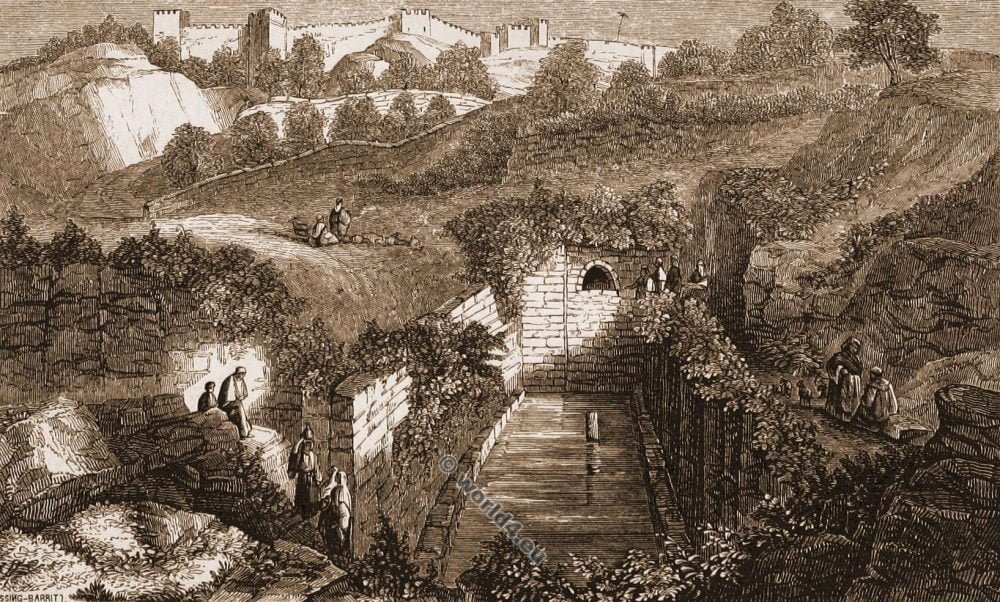
The Pool of Siloam.
by Howe Fisher. 1854.
The Pool of Siloam, also called Siloam, is a pond in Jerusalem, in which the water of the city on the eastern foot of Mount Zion the Gihon Spring was passed and which ensured the water supply of Jerusalem. The Gihon Spring is the only year-round source in Jerusalem. For Jews, the water of the Gihon Spring has a special significance because of their Solomon said to have been anointed king over all Israel.
*) Biblical researches in Palestine, Mount Sinai and Arabia Petraea, by Edward Robinson (1794-1863). 3 volumes. Boston: Crocker & Brewster, 1841.
Source:
- Egypt and Palestine by Francis Frith, 1858. Publisher: London, James S. Virtue, City Road and Ivy Lane. New York: 26, John Street.
- Palestine Past and Present. Pictorial and Descriptive. Compiled and edited by L. Valentin. Published by Frederick Warne & Co. London 1893
- Jerusalem Explored. Being a description of the ancient and modern city, with numerous illustrations consisting of views, ground plans, and sections by Ermete Pierotti; translated by Thomas George Bonney (Fellow of St Johns College, Cambridge). London: Bell and Daldy; Cambridge: Deighton, Bell and Co. 1864.
- Oriental and Sacred Scences, from notes of travel in Greece, Turkey and Palestine by Howe Fisher. Published 1854.
- The Holy Land, Syria, Idumea, Arabia, Egypt, & Nubia, by David Roberts, George Croly, William Brockedon. London: Lithographed, printed and published by Day & Son, lithographers to the Queen. Cate Street, Lincoln’s Inn Fields, 1855.
- Walks about the city and environs of Jerusalem by William Henry Bartlett (1809-1854). London: Hall, Virtue & Co. 1848.
Continuing
Discover more from World4 Costume Culture History
Subscribe to get the latest posts sent to your email.

